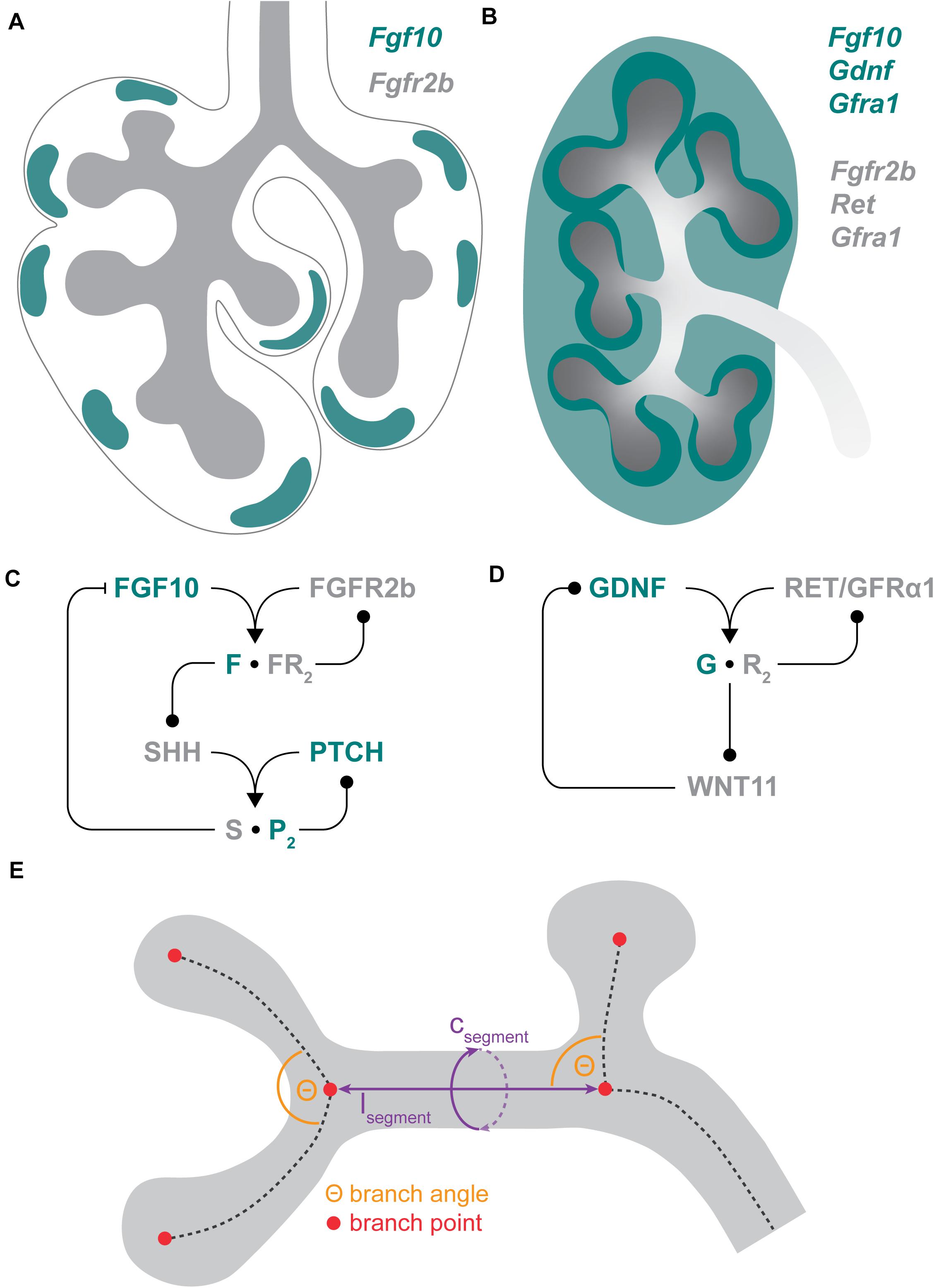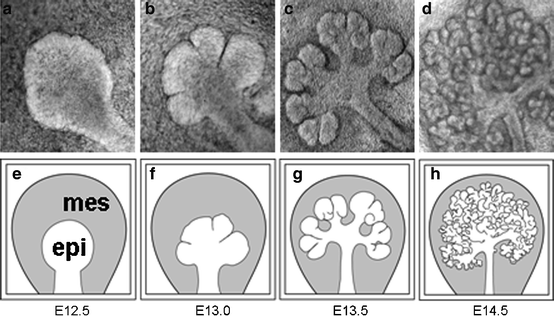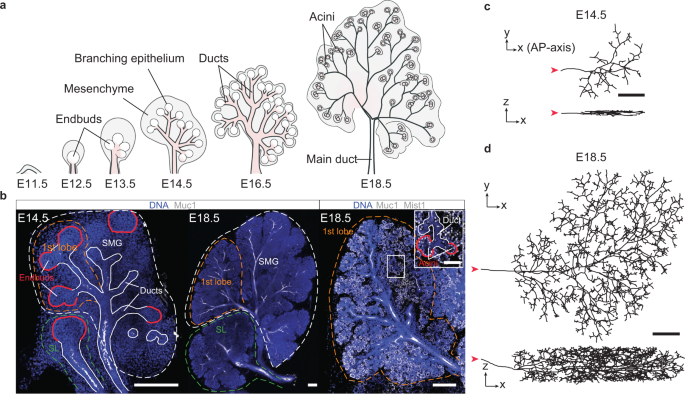人間の体には樹木のように枝が伸びて枝分かれした構造が一般的にみられます。細胞レベルでも、神経細胞、例えば小脳のプルキンエ細胞などは実に見事な樹木のような樹状突起を持っています。臓器レベルだと、肺は気管から気管支に枝分かれして、気管支はさらに細かく、細かく20数回も枝分かれした構造になっていて最終的な末端部分には肺胞とよばれる構造があってそこに毛細血管が密集していて酸素や二酸化炭素が、肺胞内の「空気」と血管内の「血液」との間で交換されます。
- Organ-Specific Branching Morphogenesis Front. Cell Dev. Biol., 07 June 2021 https://www.frontiersin.org/journals/cell-and-developmental-biology/articles/10.3389/fcell.2021.671402/full

- Interface Oral Health Science 2009 Conference paper Cleft formation and branching morphogenesis of salivary gland: exploration of new functional genes
 https://link.springer.com/chapter/10.1007/978-4-431-99644-6_2
https://link.springer.com/chapter/10.1007/978-4-431-99644-6_2
腺である肝臓も、肝臓の中には門脈と動脈、胆管がやはり樹状の構造をしています。他の臓器、例えば、唾液腺も枝分かれ構造をしています。膵臓もそうです。
- FGF signaling regulates salivary gland branching morphogenesis by modulating cell adhesion Ayan T. Ray, Philippe Soriano 20 March 2023 DEVELOPMENT https://journals.biologists.com/dev/article/150/6/dev201293/297264/FGF-signaling-regulates-salivary-gland-branching

- Salivary Gland Branching Morphogenesis — Recent Progress and Future Opportunities Int J Oral Sci, 2(3): 117–126, 2010 https://www.nature.com/articles/ijos201017.pdf
- Epithelial branching morphogenesis of salivary gland: exploration of new functional regulators Takaoshi Sakai The Journal of Medical Investigation 56 suppl. 2009.https://www.jstage.jst.go.jp/article/jmi/56/Supplement/56_Supplement_234/_pdf
こういった管が分岐するメカニズムにはどれくらい共通性があるのでしょうか。
分岐について比較検討した論文
- Patterned cell and matrix dynamics in branching morphogenesis Rockefeller University Press Journal of Cell Biology (JCB) February 2017216(3):jcb.201610048 DOI:10.1083/jcb.201610048 LicenseCC BY-NC-SA 4.0
 https://www.researchgate.net/publication/313466383_Patterned_cell_and_matrix_dynamics_in_branching_morphogenesis
https://www.researchgate.net/publication/313466383_Patterned_cell_and_matrix_dynamics_in_branching_morphogenesis
唾液腺の分岐メカニズムに関する理論的な考察をした論文
- Inflationary theory of branching morphogenesis in the mouse salivary gland Ignacio Bordeu, Lemonia Chatzeli & Benjamin D. Simons Nature Communications volume 14, Article number: 3422 (2023) Published: 09 June 2023 https://www.nature.com/articles/s41467-023-39124-x we propose that the gland develops as a tip-driven branching-delayed random walk (BDRW).
